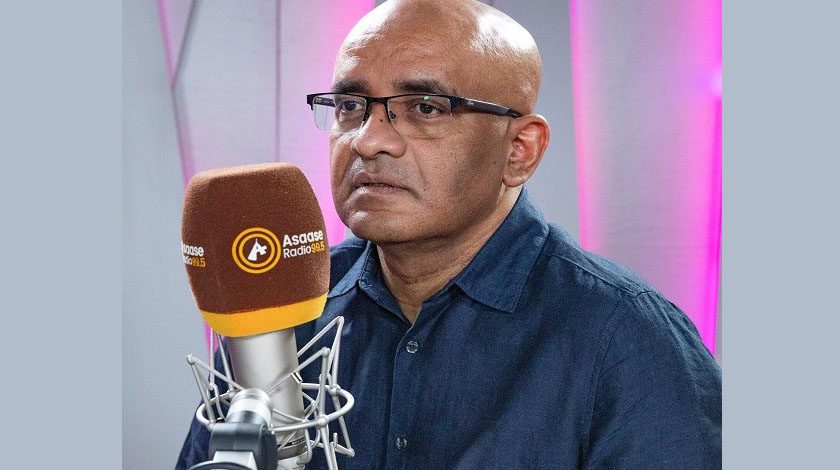For a country the size of the United Kingdom, a huge forest the size of England, which is part pf the Amazon, massive rivers, waterfalls, large deposits of minerals and fertile lands for agriculture, Guyana’s decline in fortunes has been primarily due to ‘bad policies’ says the country’s Vice President Dr. Bharrat Jagdeo.
“I recall once we were sitting watching cricket, and the former Prime Minister of Barbados, late Prime Minister Owen Arthur came. And he said to me, ‘Bharrat, you know, there was a time in the 60’s that Guyana was the Singapore of the Caribbean’. And we went from that to becoming when the Caribbean Conference of Churches came into Guyana in 1990, they wrote that Guyana was as poor as Haiti, our debt was 900% of GDP, and we’re using 153% of revenue to service debt,” the Vice President said in an interview aired on Asaase Radio 99.5 in Ghana, with host Nana Yaa Mensah.
Mr. Jagdeo is leading a Guyanese delegation on a three-day state visit to Ghana aimed at enhancing and fortifying the bilateral ties between the two oil-producing countries.
Ghana passes on key oil lessons, experiences to Guyana delegation
The Vice President reminded that a significant number of Guyanese, ‘almost half of them’, fled the country during that period due to three decades of undemocratic rule.
“So, they fled from lack of freedom and bad policies. And so, with a lot of resources, you can still be poor, if you don’t have a free country, and you do not manage well; the government practices bad policies,” Mr. Jagdeo pointed out.
He said coming from that background, the new People’s Progressive Party government in 1992 had to rebuild democratic institutions, and even before oil, moved Guyana’s per capita GDP from about 300 US dollars to about 6000 US dollars.
“Without oil, we got our debt servicing down from 153% of revenue, to 5% of revenue, one of the lowest in our hemisphere. And the stock of debt to GDP at about 40%, one of the lowest again in our hemisphere, and this is without oil,” he emphasised. “So, we are very, very conscious about the need to manage any windfall carefully, so that we don’t return to the past.”
To help achieve this, the Vice President said the government is putting policies in place to ensure that the oil and gas industry delivers real benefits to the economy.
“So, you can have extremely high growth rates, but very little impact on revenue, job creation, or economic activities because it’s not integrated. So, the idea is to utilize the windfall carefully to avoid the Dutch disease, a change in relative prices,” he said. “And to ensure that we spend it wisely in areas that can build the capacity for future non-oil growth; that is education, healthcare, infrastructure, and supporting the other non-oil economies, agriculture, etc.”
Venezuela oil production on course to be surpassed by South America’s ‘new kid on the block’
The first major oil discovery was made off the coast of the South American in 2015 by ExxonMobil and production followed soon after at the end of 2019, making it one of the fastest deepwater production ramp-up of all time. Since then, Exxon and co-venturers Hess and CNOOC have found around 10 billion barrels of oil equivalent resources spread across more than 20 discoveries at the prolific Stabroek Block. Oil production is expected to exceed 1.4 million barrels per day by 2027, placing Guyana ahead of Venezuela to become the second largest producer in South America.



